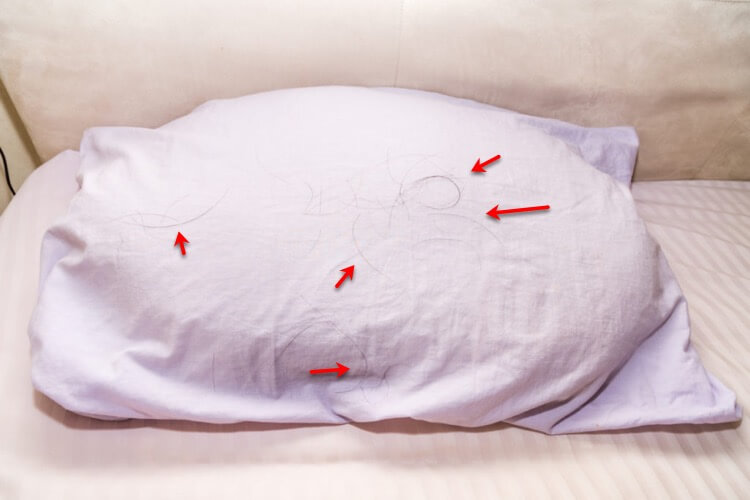NEW Hair Growth Treatment! Topical Latanoprost, Finasteride & Minoxidil

Once upon a time, not so long ago, if you were destined to lose your hair, there wasn’t much you could do besides accept your fate or shave your head. Thankfully, though, times have changed. Society is more aware of how hair loss affects people aesthetically and emotionally. More research and a wider range of effective prescription hair loss products are available than ever before. If one product isn’t the right fit, there are now others you can try. That’s why Happy Head is proud to add our new hair growth treatment topical Latanoprost, Finasteride, and Minoxidil to our product line.
Discovering Latanoprost’s Ability to Grow Hair
You may have heard the name Latanoprost before. It has been FDA-approved since 1996 as an ocular eye drop to treat glaucoma. When doctors discovered that patients who used the medication began to grow longer, fuller, darker eyelashes as a side effect, Latanoprost was marketed as an eyelash growth solution. “If Latanoprost grows eyelash hair, does it work on the scalp too?” researchers wondered. After testing, it was determined that Latanoprost is indeed effective for treating male and female pattern hair loss and other types of alopecia. Happy Head is one of the first companies to make the medication available for scalp hair loss.
The Science Behind Latanoprost
Latanoprost differs from the other prescription hair loss medications that are currently on the market. It stimulates the anagen phase of the hair growth cycle. The anagen phase is the growth phase. Latanoprost helps more hair convert from tiny, thin vellus (think peach fuzz) hair into robust terminal hair that is longer and thicker. When tested on young men with mild androgenetic alopecia, male pattern baldness, Latanoprost increased hair density in approximately 24 weeks.

The Benefit of Combining Latanoprost with Finasteride and Minoxidil
Happy Head’s newest growth treatment contains 0.005 percent Latanoprost, 0.3 percent Finasteride, and 8 percent Minoxidil. The reason is that treating genetic hair loss often requires a cocktail of medications that attack the hair loss from different angles. As we just discussed, Latanoprost jumpstarts the hair growth cycle. Finasteride is a DHT blocker. It prevents testosterone from converting to Dihydrotestosterone (DHT) and attaching to the hair follicles. If testosterone doesn’t convert, hair isn’t triggered to fall out. Minoxidil is what’s called a vasodilator. It sends oxygen to the hair follicles, enlarging them. New, healthy hair can emerge when the hair follicles are wide open. So, three different medications with different purposes work synergistically to help regrow your hair.
Latanoprost for Alopecia
Is Latanoprost the right solution for any type of alopecia? To date, studies have primarily focused on patients with male and female pattern hair loss. More research needs to be conducted to determine whether the treatment is effective for alopecia areata or other types of alopecia. Not sure what type of alopecia you have? Then, it’s time to visit a board-certified dermatologist for a diagnosis.
How to Use Topical Latanoprost, Finasteride & Minoxidil
Topical hair loss medications are preferred by patients who want to avoid side effects that can accompany oral medications. Each bottle of topical Latanoprost, Finasteride, and Minoxidil comes with a dropper that allows you to measure the exact amount needed and apply it directly to your scalp. The medication is easy to use. Simply fill the dropper twice to the 0.5 ml, align the dropper to your scalp, apply the solution, and rub it in. The most common side effect from topicals is redness and irritation, however, which can easily be avoided by titrating the medication. Simply apply one time per day for the first week, and twice a day the following weeks.
Getting Your Prescription Filled
Topical Latanoprost, Finasteride, and Minoxidil hair growth treatment is only available by prescription. For your convenience, Happy Head offers free online consultations and will fill your prescription if you are a candidate for the medication. Simply complete a short online questionnaire, and a licensed dermatologist will determine whether our new hair growth treatment is a good fit. We also offer customized treatments, so it’s easy to modify formulas to meet individual needs.
Our new hair growth treatment combining Latanoprost with Finasteride and Minoxidil is an innovative option for people experiencing male or female pattern baldness. If you’re interested in getting more information, contact us, and take advantage of our 50 percent off introductory offer.



